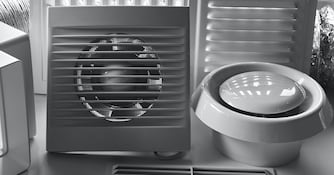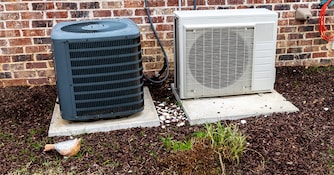
What High-Efficiency Venting Material You Should Use
How to Pick the Perfect Venting Solution
To combat ever-increasing energy costs, appliance manufacturers are advancing technology to make heating systems more efficient than ever before. Homeowners who are considering making the switch to higher-efficiency appliances may not realize that with increased efficiency comes a new set of venting requirements. That's where DuraVent PolyPro comes in.
What is PolyPro? DuraVent PolyPro is a polypropylene vent pipe system for use with water heaters, condensing boilers, and warm air furnaces. Easier and faster to install than PVC, PolyPro is engineered to save time and money.
Venting Options
There are two types of venting systems: natural draft (passive) and positive draft (active):Natural Draft (Passive)
In lower-efficiency systems, the furnace's and water heater's venting are considered to be passive, where hot exhaust gasses are vented out through the roof. Because it is lighter than the surrounding air, the hot exhaust rises quickly, creating a natural draft. This draft pulls fresh air into the appliance and prevents exhaust gases from entering your home. For this reason, passive systems are often called gravity vented or chimney vented.A quick way to tell if you have a passive system is to look for galvanized steel venting atop the heating appliances where they vent out to the roof. It is not uncommon for two passive appliances, like a furnace and water heater, to share a single vent. In a passive system, galvanized steel sections are often connected, sometimes loosely, with only a couple screws holding them together
Positive Draft (Active)
In a high-efficiency system or an active venting system, those initial combustion gases, instead of being exhausted immediately, are recirculated back into a chamber where additional heat is extracted and then finally exhausted out.Due to the lower temperature of exhaust gases, a natural draft cannot be used to expel them. Instead, the venting system utilizes an internal motorized fan to push them out of the home. These types of systems are often called power vent, direct vent, or direct exhaust systems.
Active and passive systems should not be tied together because it's very dangerous. The mechanical force of the active appliance can easily overcome the natural draft of the other and cause deadly carbon monoxide to enter the home. One of the most immediately distinguishable traits of a high-efficiency heating appliance is their use of a white plastic tubing called PVC (polyvinyl chloride) that's also commonly used for plumbing projects.
Can I Use My Existing Venting?
When replacing older, less-efficient heating equipment like a conventional forced-air furnace and water heater with high-efficiency types, the older 'Type B' venting system also has to be upgraded. However, if you're replacing those appliances with lower efficiency ones, you should still upgrade the venting system.What Venting Material Should I Use?
DuraVent PolyPro is a "plug n' play" vent pipe system specifically designed for use with high-efficiency water heaters, condensing boilers, and forced-air furnaces. Made from safe 2.2mm thick polypropylene (listed by Intertek to the ULC S636 standard in Canada), it's easier, faster, and safer than both galvanized steel or PVC.Whether you have an active or passive system, you should use a venting material that is specifically engineered for heating equipment like those from DuraVent. PolyPro is designed to take the place of both steel (as a chase) and PVC materials using polypropylene.
Unlike PVC, it won't degrade and crack over time and unlike galvanized steel, it forms an air-tight seal utilizing a simple-to-use locking system. It takes the benefits from both materials, with none of the drawbacks. Just like PVC, you can cut it to length, but you don't need to use any messy glues. It also has the durability of steel because it's suitable for exhaust temperatures up to 230°F / 110°C, and UV-resistant termination pipes.
Installers enjoy PolyPro's ease-of-use because it's engineered to save time and money. It works with existing B Vent systems as well by using them as a chase, making it the perfect choice for retrofitting older systems. So, when you consider upgrading your heating appliances, you'll know you won't have to worry about a complicated vent conversion because you'll have PolyPro!
Sizing/Application Questions?
If you're installing a new high-efficiency appliance and have venting questions, the experts here at eComfort are ready to help get you the right products you need.Was this article helpful?





